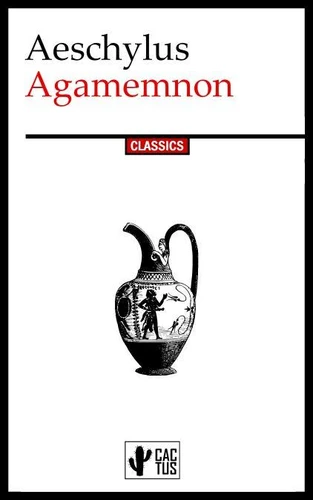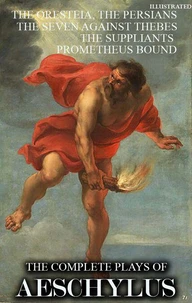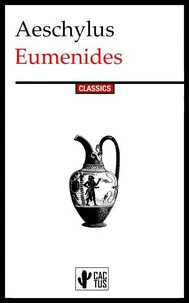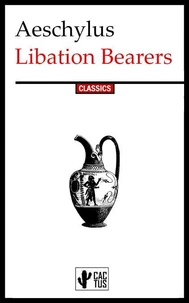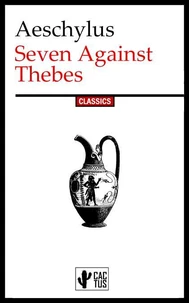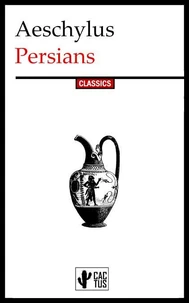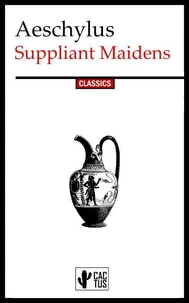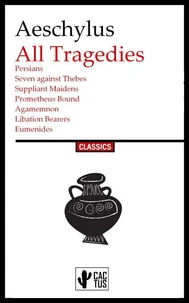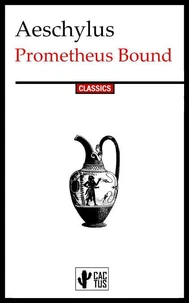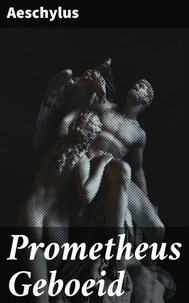Agamemnon
Par : ,Formats :
Disponible dans votre compte client Decitre ou Furet du Nord dès validation de votre commande. Le format ePub est :
- Compatible avec une lecture sur My Vivlio (smartphone, tablette, ordinateur)
- Compatible avec une lecture sur liseuses Vivlio
- Pour les liseuses autres que Vivlio, vous devez utiliser le logiciel Adobe Digital Edition. Non compatible avec la lecture sur les liseuses Kindle, Remarkable et Sony
 , qui est-ce ?
, qui est-ce ?Notre partenaire de plateforme de lecture numérique où vous retrouverez l'ensemble de vos ebooks gratuitement
Pour en savoir plus sur nos ebooks, consultez notre aide en ligne ici
- FormatePub
- ISBN1256792641
- EAN9791256792641
- Date de parution03/11/2024
- Protection num.Digital Watermarking
- Taille399 Ko
- Infos supplémentairesepub
- ÉditeurCactus
Résumé
Agamemnon, ruler of the polis of Argos, on leaving for the Trojan War had no favorable winds, so to propitiate himself to the gods he had sacrificed his daughter Iphigenia, a maiden of exceptional beauty. The winds then had begun to be propitious and the fleet had been able to sail to Troy. But Clytemnestra, his wife, meditates revenge for her daughter's sacrifice. When Agamemnon returns from the war, she thus convinces Aegisthus, her husband's cousin and her lover, to help her in the bloody undertaking.
The first chapter of the Oresteia - it is in fact completed with The Libation Bearers and Eumenides - Aeschylus' Agamemnon vivisects the value heritage of ancient Greece to make it the battleground of the feelings of all humanity, beyond any attempt at temporal limitation. At the center of the tragedy is revenge. Revenge as a way to express feelings, but also revenge as damnation: for to every human action there is a reaction, Aeschylus seems to tell us, and this defines our responsibilities in the face of our own and others' pain.
The first chapter of the Oresteia - it is in fact completed with The Libation Bearers and Eumenides - Aeschylus' Agamemnon vivisects the value heritage of ancient Greece to make it the battleground of the feelings of all humanity, beyond any attempt at temporal limitation. At the center of the tragedy is revenge. Revenge as a way to express feelings, but also revenge as damnation: for to every human action there is a reaction, Aeschylus seems to tell us, and this defines our responsibilities in the face of our own and others' pain.
Agamemnon, ruler of the polis of Argos, on leaving for the Trojan War had no favorable winds, so to propitiate himself to the gods he had sacrificed his daughter Iphigenia, a maiden of exceptional beauty. The winds then had begun to be propitious and the fleet had been able to sail to Troy. But Clytemnestra, his wife, meditates revenge for her daughter's sacrifice. When Agamemnon returns from the war, she thus convinces Aegisthus, her husband's cousin and her lover, to help her in the bloody undertaking.
The first chapter of the Oresteia - it is in fact completed with The Libation Bearers and Eumenides - Aeschylus' Agamemnon vivisects the value heritage of ancient Greece to make it the battleground of the feelings of all humanity, beyond any attempt at temporal limitation. At the center of the tragedy is revenge. Revenge as a way to express feelings, but also revenge as damnation: for to every human action there is a reaction, Aeschylus seems to tell us, and this defines our responsibilities in the face of our own and others' pain.
The first chapter of the Oresteia - it is in fact completed with The Libation Bearers and Eumenides - Aeschylus' Agamemnon vivisects the value heritage of ancient Greece to make it the battleground of the feelings of all humanity, beyond any attempt at temporal limitation. At the center of the tragedy is revenge. Revenge as a way to express feelings, but also revenge as damnation: for to every human action there is a reaction, Aeschylus seems to tell us, and this defines our responsibilities in the face of our own and others' pain.

